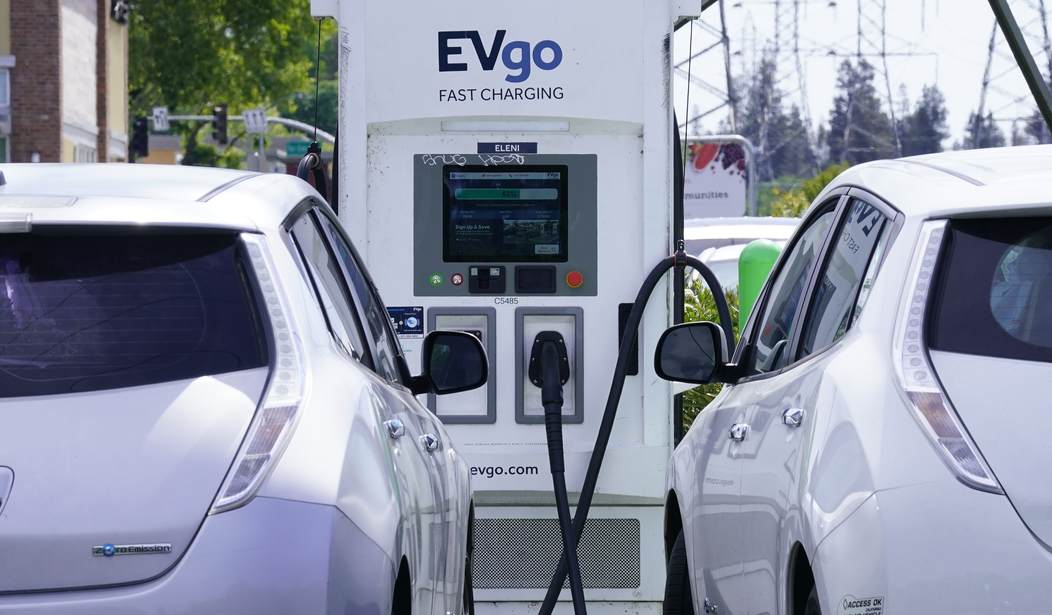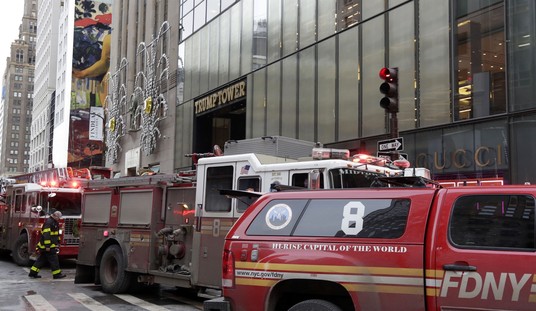Detroit – From idled Illinois manufacturing plants to rising electricity costs to Michigan residents shuttered in their cars without power, the Green Revolution is wreaking havoc on the Midwest.
Governments are regulating America’s industrial heartland into an era of carbon prohibition. Scientists say the transformation will have little environmental benefit, but their effects are being felt by workers and consumers as jobs and power reliability suffer.
“I’m as cold as hell,” Ron George, 63, told The Detroit News from his van, where he’d lived for five days in front of his powerless Redford Township home after a February 22 winter storm left over 700,000 residents without power.
Electric grid strain
The Midwest is in the midst of another cold winter, and electric grid operators have warned they don’t have the energy resources to provide power. The reason? Governments are forcing utilities to abandon fossil fuels in favor of less reliable renewables.
“Everybody in the Midwest should be aware that there are issues with our grid,” Tom Sobeck, president of northern Michigan-based utility Presque Isle Electric & Gas, told The Detroit News. “You get a perfect storm of weather and a maintenance outage on one of our generation plants and. . . . It could be bad.”
The Midcontinent Independent System Operator (MISO), grid operator for most of the Midwest and the Canadian province of Manitoba, says that in five years, 30% of its energy will come from wind and solar power. Yet, with renewables currently at 15%, states like Michigan are already at a breaking point. This winter the state was found to be short of planning standards developed by the North American Electric Reliability Corporation.
Recommended
“(MISO says) that we were on the wrong side of that planning standard," said state utility regulator Dan Scripps, chair of the Michigan Public Service Commission, with "an increased likelihood of outages because we didn't have enough resources available."
MISO suggests there needs to be a more stable energy source to keep the lights on, but there is a rush to renewables instead. Michigan, led by Detroit’s DTE Energy and Consumers Energy, have spent $3 billion on windmills, solar panels, and biomass in the last 15 years.
That has come at the expense of infrastructure reliability, and the state’s grid is increasingly vulnerable. A decade ago that wasn’t an issue, Melissa Seymour, MISO’s vice president of government affairs told The News. “We had plentiful generation. It was 30% above our reserve margin. Nobody was worried about resources. Now, we are at our reserve margin.”
Commented Redford Townships’ George, who says power outages appear more frequent: “I don’t know what, but something needs to be done. This happens too much."
His hunch is borne out by data as Michigan has recorded more power outages than any state this side of Texas, which has also aggressively pursued wind power.
Credit Jennifer Granholm, governor from 2003-2010, who began Michigan’s renewable push with a 2008 renewable energy mandate with an eye on eliminating fossil fuels. She warned that, among other environmental calamities, the Great Lakes would dry up. That hasn’t happened. Indeed, scientists like John Christy, professor of Atmospheric Science at the University of Alabama-Huntsville who monitors global satellite temperature data, says that “if you apply the different (national) regulations, they will have no climate impact. If you eliminate the US from the face of the earth, it will have no impact on global temperature. Climate is not as sensitive to CO2 as the models say it is.”
Granholm’s zealotry has been rewarded with a promotion to Secretary of Energy where she is implementing her Michigan energy policies on a national scale.
Her Democratic successor, Governor Gretchen Whitmer, has kept the pedal to the metal. Whitmer’s Michigan Healthy Climate Plan proposes to “generate 60% of the state’s electricity from renewable resources and phase out remaining coal-fired power plants by 2030 (and) build the infrastructure necessary to support 2 million electric vehicles on Michigan roads by 2030.”
Accompanying federal EV mandates are upending Detroit automakers.
EV job losses
Car companies face crippling fines by 2026 from the federal government unless they move their fleets to expensive, battery-powered vehicles. Stellantis Corporation, which owns brands like Jeep, Dodge, and Chrysler, is a canary in the coal mine.
Jeep is shutting down production of its Belvidere, Illinois plant – which produces the Jeep Cherokee SUV - at a cost of 1,350 jobs. Industry insiders say Cherokee’s electrified replacement will be built in Mexico. Stellantis CEO Carlos Tavares has said EVs cost 40% more to produce than their internal combustion counterparts. Those increased costs could drive down sales volumes as well as production to lower-cost countries.
Stellantis paid over $700 million in fines last year for the crime of making some of the US market’s most coveted autos – the low-mpg, V8-powered Dodge Challenger and Charger. To avoid further penalties, Dodge is nixing production of those models at the end of this year at Canada’s Brampton Assembly.
Other domestic automakers cutting jobs in the move to EVs include General Motors (500 job cuts this February) and Ford (cut 3,800 jobs in Europe which is banning gas-engine sales by 2035).
As governments force EVs, consumers are plugging into an increasingly expensive (as well as unreliable) electric grid.
Rising rates
With its push to renewables, DTE Energy rates have been on the rise. The utility recently announced a hike to 21 cents per kWh during peak evening hours – just two cents shy of California’s average 23 cents per kWh, and 20 percent above the national average.
These high electricity costs are helping drive its automakers south to more affordable – and politically-approved – hydro-power in the south. Ford, GM, and Volkswagen, for example, are investing billions in energy-intensive battery plants in Tennessee where hydropower is both cheaper – and more attractive to ESG-focused Wall Street investors.
DTE Energy CEO Trevor Lauer, under fire for his utility’s unreliable service, blames a “new normal of the stronger weather patterns.”
Climatologist Christy disagrees. “We’ve been monitoring the data since 1979,” he said of climate change fears. “Hurricanes have not gotten worse. There is no increase in floods, drought, or tornadoes. That goes for extreme weather events, too.”
Payne is auto critic for The Detroit News. Find him at hpayne@detroitnews.com or Twitter @HenryEPayne

























Join the conversation as a VIP Member